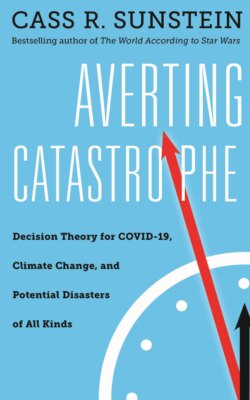Читать книгу Averting Catastrophe - Cass R. Sunstein - Страница 9
2 With and Without Numbers
ОглавлениеSometimes ordinary people do not have a lot of knowledge. Consider the case of COVID-19. What, exactly, are the benefits of wearing a mask? The risks of going on the subway? The same thing is true of policymakers. Consider the case of climate change, where it is worth quoting Pindyck at length:1
One of the two more important uncertainties pertains to the extent of warming (and other aspects of climate change) that will occur given current and expected future GHG emissions. The second uncertainty pertains to the economic impact of any climate change that might occur, an impact that depends critically on the possibility of adaptation. Although various estimates are available, we simply don’t know how much warmer the world will become by the end of the century under the Paris Agreement, or under any other agreement. Nor do we know how much worse off we will be if the global mean temperature increases by 2◦C or even 5◦C.
In fact, we may never be able to resolve these uncertainties (at least over the [next] few decades). It may be that the extent of warming and its impact are not just unknown, but also unknowable. . . . When assessing climate sensitivity, we at least have scientific results to rely on, and can argue coherently about the probability distributions that are most consistent with those results. When it comes to the predicting the impact of climate change, however, we have much less to go on, and the uncertainty is far greater. In fact, we know very little about the impact that higher temperatures and rising sea levels would have on the economy, and on society more generally. . . . So how likely is a catastrophic outcome, and how catastrophic might it turn out to be? How high can the atmospheric CO2 concentration be before the climate system reaches a “tipping point,” and temperatures rise rapidly? We don’t know.
Pindyck sounds a lot like Keynes here, though Keynes was making a general point about problems that policymakers (and the rest of us) sometimes face. If we don’t know, what should we do?
For many reasons, governments, private institutions, and individuals might pay too little attention to catastrophic risks. Many people suffer from “present bias”; they focus on today and tomorrow, and not on the long term. They might ignore a risk whose full force will be faced in decades or more. We have also seen that people assess risks by using the availability heuristic, asking whether relevant examples come to mind. A catastrophic risk might well be one that happens very infrequently, which means that people might think that it need not be taken seriously; consider financial crises or pandemics. People also tend to be unrealistically optimistic, which might mean that they will give some risks far less attention than they deserve. People also tend to think that growth of various sorts is linear rather than exponential. For some risks, including that of a pandemic, “exponential growth neglect” can lead people to discount the real danger, as happened in the early stages of the COVID-19 pandemic of 2020.2 But my main topic here is how to think about appropriate responses, not behavioral science.
